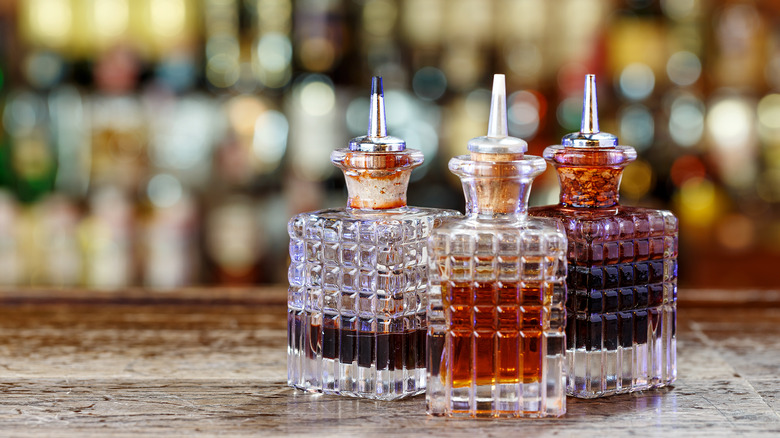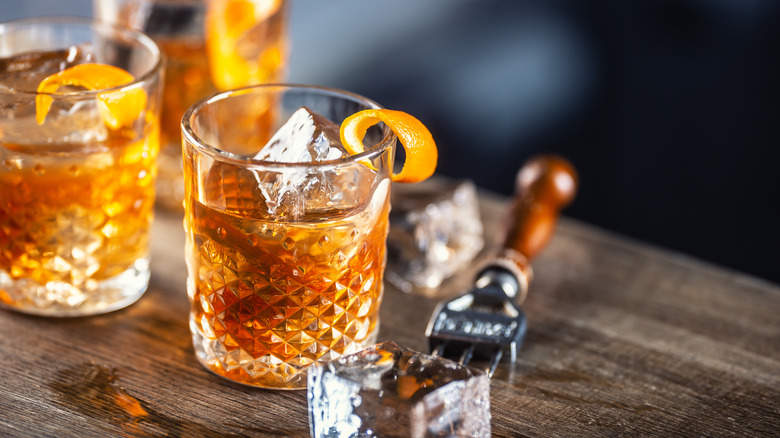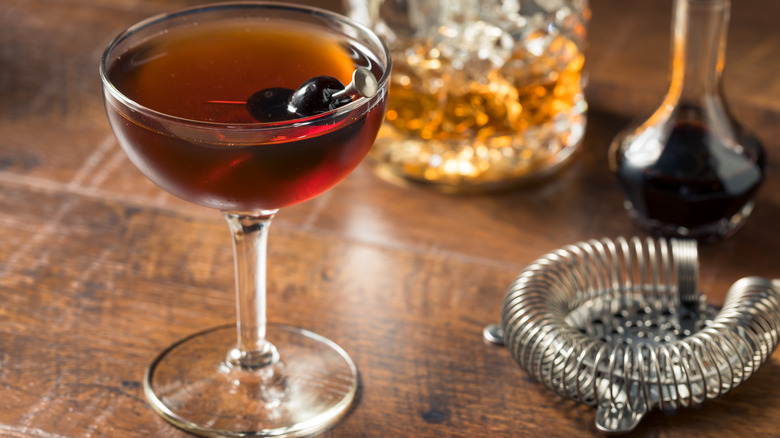Do Bitters Actually Contain Alcohol?
Bitters bring a lot to the table. Practically magical in their versatility, these earthy, complex tinctures are used to liven up cocktails and mocktails around the world. Got plain sparkling water? Kick it in the pants with a few dashes of bitters for flavor. Got a craving for one of the world's most popular cocktails? Pretend you're Don Draper or James Bond as you sip an old fashioned, made with a mixture of bitters and sugar alongside bourbon or rye with an orange peel garnish. You can even add them to baked goods and savory recipes.
The undeniably old-world medicinal qualities of bitters also hint at roots in kitchen witchery. Got a tummy ache? Sip something with bitters in it for soothing relief. Your bloating might just ease up, too.
As for their growing popularity, recent global sales of bitters totalled around $4.3 billion in 2021, according to Digital Journal, with forecasts to increase all but confirming that these additives are an essential candidate for stocking in bars and home liquor cabinets.
Ancient and distinct
The vintage flavors of bitters, at once herbaceous and unusual, leave plenty to explore. Angostura's classic formula contains the bitter plant called gentian and smells of spices like clove and cinnamon. Peychaud's carries a licorice taste with some hints of cherry. Chocolate bitters, cardamom, peach, mint, and even celery are a few other flavors worth exploring, each with its own notes of botanical goodness.
And while many outlets talk about bitters as an infusion, which would seemingly imply boiling herbs and spices in water, Angostura refers to its bitters as having been created as a tincture in Venezuela by German army surgeon Dr. Johann Gottlieb Benjamin Siegert in 1824. Tinctures are herbs that have been soaked in alcohol, an old custom going as far back as ancient Egypt when herbs were added to some wines.
Because they are sold over the counter in many grocery stores, it's easy to imagine a low or non-existent alcohol level, but most bitters are alcohol-based (notable exceptions to the rule come from brands like Fee Brothers, All The Bitter, and El Guapo).
Barely boozy?
The alcohol content in bitters is high compared to other popular alcoholic beverages. For example, while a standard serving of beer contains 5% ABV (alcohol by volume), 5 ounces of wine clocks in at around 12% ABV, and many distilled spirits offer a whopping 40% ABV, some bitters can trounce them all. Angostura contains 44.7% ABV. Peychaud's, by comparison, has a relatively modest 35% ABV. However, bitters are used by the dash, often considered to be about ⅛ of a teaspoon. Because the amount used is so small, the alcohol content can seem somewhat trivial. That's because two dashes of Angostura bitters in an otherwise non-alcoholic beverage would result in 0.45% ABV. You'd have to drink 10 times that amount to approach the ABV of the average beer.
Additionally, WebMD search results for the interaction warnings between bitters and medications don't mention the alcohol level as being potentially hazardous (though WebMD advises not giving them to children). Instead, the botanicals are cited as a possible danger, and a doctor's consultation is recommended before consuming bitters when one is on a prescription medication. Bottom line: most bitters do have alcohol, but when used in moderation, the amount might be negligible.


